Sampling a well-travelled 1974 Ford 5000 tractor
Posted by Chris Graham on 14th June 2024
Jane Brooks takes a look at her husband’s venerable, 1974 Ford 5000, which is a very well-travelled tractor.
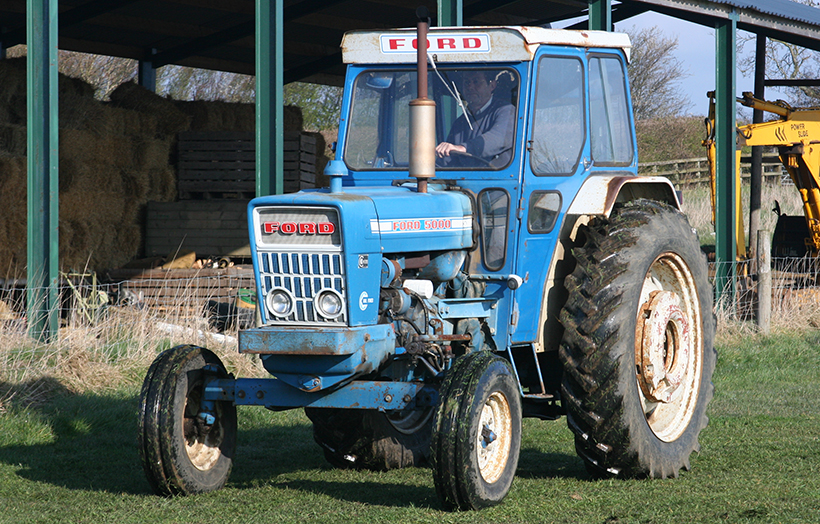
Originally supplied to a farm in Gloucestershire the tractor has been in the ownership of Stephen Brooks for well over two decades.
Way back in the late 1990s Stephen Brooks purchased a Ford 5000 tractor. The tractor had spent all its working life on a place called Mickleton Hills Farm, which in latter days has become a wedding venue. “I found it through a friend in Ebrington,” Steve explained, ‘Mickleton Hills Farm is about ten minutes away from Ebrington.”
Stephen also found out that Paul Yates, a Mickleton based agricultural engineer of his acquaintance, had actually carried out its pre-delivery inspection whilst he was a young apprentice at Coulters. “Actually, I was surprised to learn that Paul remembered the tractor and that he had pdi’d it, although of course, I knew when it was new it had been supplied by them, and that was confirmed by the original owners when the tractor was purchased. The tractor also had the original Coulters dealers’ plate on it, also they were the main Ford dealer in the area at the time”.
Having the original dealer plate on the tractor really spurred him on in his quest to find out more about the company. “I knew that Warwick based Murley Agricultural Supplies, which is now part of the T.H. White group had taken over the agricultural side of Coulters at some point in the 1990s, but knowing little else about the business I decided to dig into the company’s past”.
Basildon Built
The tractor in question is a very original Basildon built 1974 Ford Force 5000, a model which was produced from 1968 to 1975. Power is provided by a four-cylinder, naturally aspirated direct injection 3,294cc engine producing 75hp, it has a two-speed PTO, two double acting spool valves, a pick-up hitch and although power steering was offered as a factory fitted option. “I don’t know why, but my tractor is fitted with an after-market power steering kit,” Stephen commented, “I’ve never had any problems with it though, in fact the tractor has never really let me down at all and when I first brought it, although I didn’t give it a hard life, I did give it some use, particularly before I started using 40 series Ford’s in my agricultural contracting business around 15 years ago”.
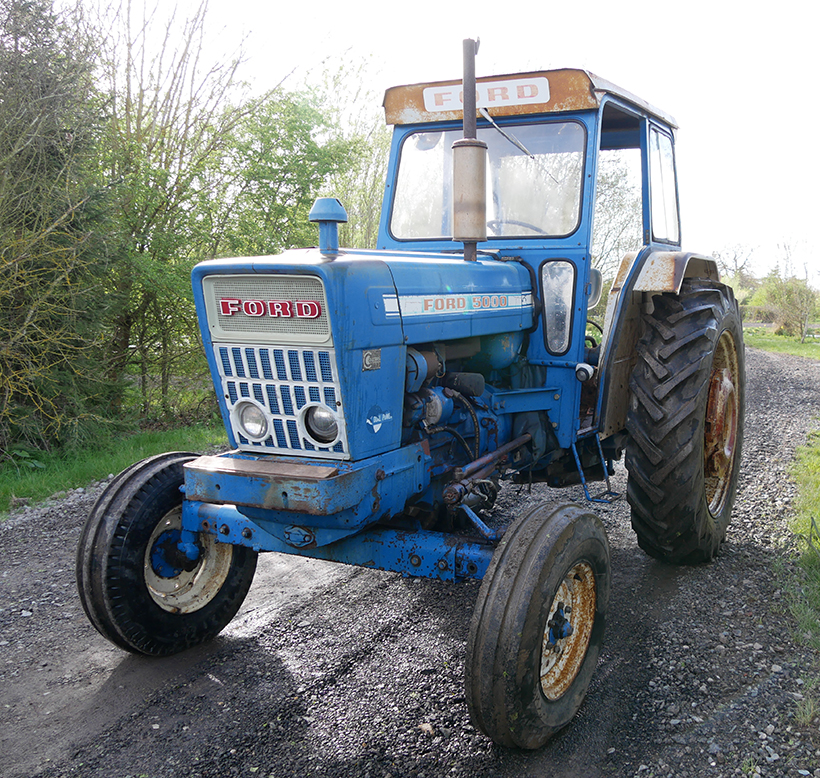
Registered in 1974 Stephen Brooks Ford 5000 has the benefit of dual power, which had only been introduced in December of 1973.
Stephen’s Ford 5000 is from quite late on in the tractors production life, it is equipped with dual power, which added a power shift underdrive to the basic 8-speed transmission which transforms the 8×2 gearbox into a 16×4 transmission which gave a clutchless gearchange with engine breaking. Dual power is quite rare on a Ford 5000 as it was only introduced as an option for the Ford 5000 and 7000 models at The Smithfield Show of 1973, in advance of the 600 series which were launched in 1975/76.
The tractor has only done 6,572 hours is still in the ex’ farm condition he found it in. In fact, it is everything Stephen likes in a tractor, fairly local, in its working clothes and with low hours.
Apart from a little paddock work it has done very little over the last 15 years, “I wanted to keep the hours low, and frankly it’s not really a work tractor for this day and age. I have other work machines that are far more comfortable and more suited to modern farming, so it became my favourite tractor for taking part in numerous local road runs. We also went to Northern Ireland for the 2004 National Vintage Road Run with it, and to Gisburn in Lancashire for the same event the following year”.
Record maker
Another trip the tractor took was to take part in the 2007 working tractor and implement world record, where the tractor was one of 2,141 working simultaneously at the British Tractor Challenge held at Hullavington Air Base, in Wiltshire.

First registered in October 1974, the tractor no longer leaves the farm, but is kept under cover and is just used for a bit of light summer work.
Also, given that Stephen is married to our new editor the tractor has been featured in a number of magazine articles over the intervening years. “I’d have to say it’s a pretty well-travelled tractor and now enjoying its retirement in Warwickshire” he commented. “Although I also have a Pre-Force 4000 I prefer the styling of the Force Ford’s they seemed such an improvement on the earlier models, of course, adding a cab made a difference, although I’d say that the Q cab, that replaced the FIECO safety cab and was launched in May 1976 for the 600 series was a huge step up at the time”.
A little bit of History – The World Tractor Concept.
Taking a look at the origin of the 1000 series, Ford’s decision to consolidate all of its models and no longer continue to produce different designs for different markets, culminated in the Ford 1000 series of tractors.
The UK launch of the range at The Royal Smithfield Show of 1964 has gone down in the annals of tractor history, when two mighty ranges of tractors were launched, the Massey Ferguson 100 series and the Ford DX 1000 range. At that time Ford was a major player in the tractor industry and today its successor New Holland is a global full-line agricultural machinery manufacturer.

Taking part in the 2004 National Vintage Tractor Road Run in County Antrim.
Ford’s brand-new Basildon tractor plant also opened in Essex in 1964, close enough to Dagenham to enable the skilled workforce to move jobs but not homes. Construction of the new factory on the 60-acre site began on April 2 1962 and was completed on February 29 1964 at a cost of £20 million.
There were 1,360,000 sq. ft of buildings and the first tractor rolled off the line on May 15 1964 with the factory gearing up for full production later in the year. At least 75% of UK production was earmarked for export, with a plan to produce 500 engines and 300 tractors a day.
Common components
Work on a new integrated tractor range had been ongoing in the US since early 1960, they would be built from common components at three different production plants, and suited to use across the world. Codenamed 6X the three plants were Highland Park, Michigan, Ford’s European plant at Antwerp and at Basildon. Initially three new models, the 2000, 3000 and 5000 were planned, with the 4000 added shortly afterwards.
The new models were to be coloured Ford Blue and Grey, and it was decided to use the colour scheme on the existing range of Fordson tractors in 1963, probably to give users time to get used to it.
UK and European production started in 1964, whereas at Highland Park the first tractors came off the line in 1965. There was also the anomaly of the Ford 6000, introduced in 1961, in the Ford red and grey livery, the six-cylinder was relaunched in Ford blue and grey as the top of the US range alongside the DX models.
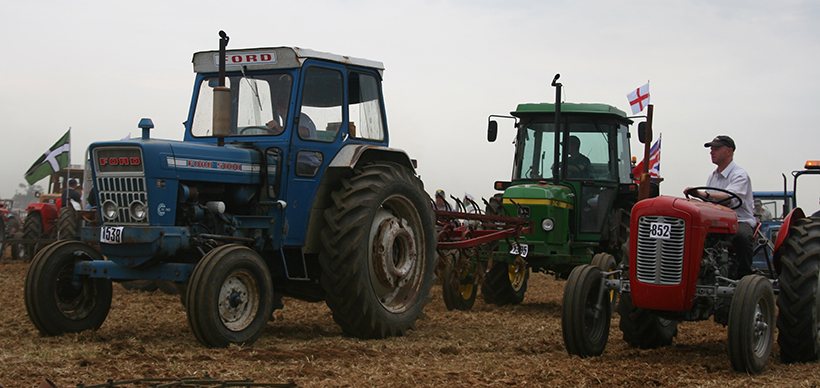
Right in the middle of things at the British Tractor Challenge held at Hullavington Air Base, in Wiltshire.
The official launch of the new range took place in the United States in October 1964.
British farmers first opportunity to see the range was at the 1964 Royal Smithfield Show, held at Earls Court, in London.
Three of the models had three-cylinder engines, these were the entry level 37hp 2000 Dexta, which didn’t prove that popular, the 46hp 3000 Super Dexta, a better seller, and the 55hp 4000 Major. The 65hp 5000 Super Major was the only four-cylinder model. The Dexta and Major names were retained for a short time, probably to give customers a sense of familiarity.
Two-wheel drive
The DX range were two-wheel drive, in the UK companies such as Roadless, County, Doe, Northrop and Muir Hill carried out four-wheel-drive conversions, in the US Elenco carried out similar conversions.
Ford didn’t supply tractor cabs, aftermarket weather cabs were offered by companies such as Lambourn, Weathershield, Duncan and Winsam.
However, by the end of 1965 it was evident there was an issue as the tractors gained a reputation for being unreliable. The development of the range had been rushed, with a lack of testing, both of the tractor as a whole and its components.
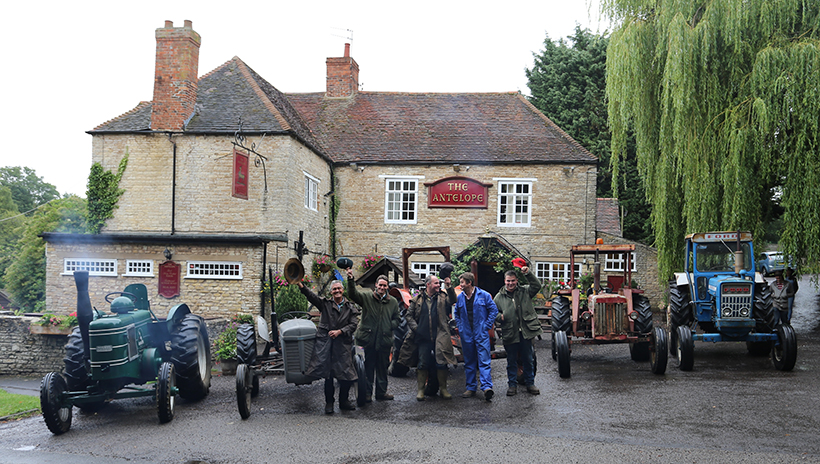
Reminiscent of this years’ wet weather, a few years ago Stephen and a few friends took part in a very wet road run that inevitably finished at the local Pub.
The Select-O-Speed gearbox, an optional semi-automatic clutchless gear change operated by just a single lever under the steering wheel was difficult to operate, becoming so unpopular that many tractors were returned to dealers for a standard transmission replacement.
Ford went back to the design board, sorted out problems in the range and launched the updated restyled 6Y Ford Force range in 1968. Easily recognised by the lack of vents on the side of the bonnet, they also had a screw on oil filter. ‘Select-O-Speed’ transmission was offered as an option, perhaps farmers had got to grips with it.
In 1970 6Y Ford Force models for the UK, Ireland and Scandinavia were launched at ‘The Royal Show’ equipped with a safety cab designed to comply with the new Agricultural (Tractor Cabs) Regulations which were introduced in September of that same year.
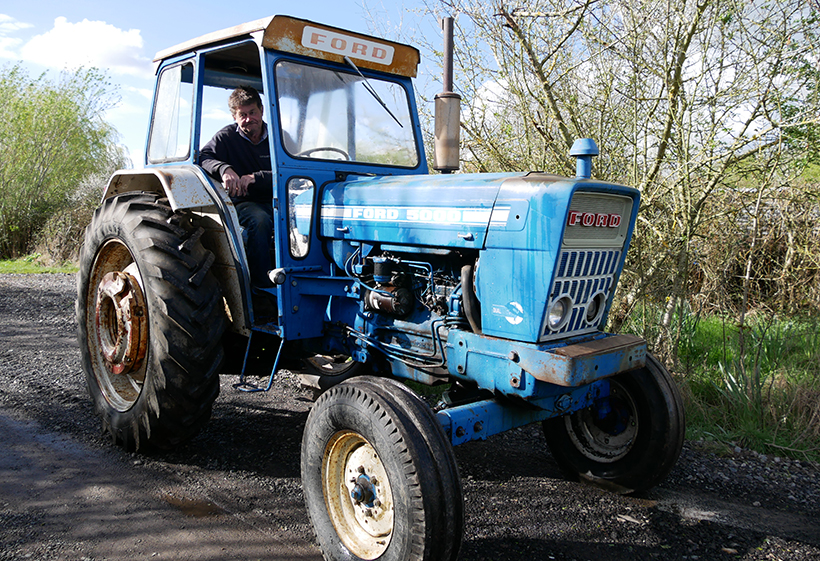
Nowadays the Ford 5000 is pretty much enjoying retirement in the tractor shed, only coming out when the weather is good or for the occasion open day on the farm.
In December 1971 the top of the range 94hp turbocharged Ford 7000 was launched at The Royal Smith field Show.
Then in December 1973 The Royal Smithfield Show saw the introduction of a number of improvements to the range including, dual power and a two-speed independent PTO on the Ford 5000 and Ford 7000. The Ford 2000 and Ford 3000 also received a cosmetic makeover.
Which is where Stephens’ Ford 5000 comes in, right towards the end of the range’s lifetime, when the problems were solved, safety cabs were factory fitted and dual power was available.
Anyway, to continue Stephen’s story, after some time spent researching, well delegating that job to the wife to see what she could find out it was discovered that John Coulter first started out as a carriage maker in Market Place, Evesham during the 1850s. By the census of 1871 he was recorded as employing five men and two boys including his own son William Ralph Coulter, who was born in 1849.

Still equipped with its original engine the tractor has done just over 6,500 hours.
On the death of his father John in 1885, William took over the business, the 1911 census lists William as Carriage Builder, Cycle and Motor Agent. William ran Coulter’s until his death in 1927.
The next records show that Coulters Garage (Evesham) Ltd., was incorporated on 09/12/1930 with the description that the company operates as a dealer in Ford motorcars and commercial vehicles. Unfortunately, no notification of the Directors at the time could be found.
During the 1930s Coulters advertised new and repaired Fordson tractors for sale in the Gloucestershire Echo, as well as carrying an agency for Ford cars. They also seem to have become agents for Oliver ploughs.
Moving on to the 1960s there were three separate Coulters sites in Evesham, including the original premises at 9 – 10 Market Place, another at Elm Road, where on the 25th January 1966 Commercial Motor Magazine reported that ‘A large Commercial vehicle unit has been opened by Coulters Garage (Evesham) Ltd.’, and lastly Cowl Street, Evesham. In addition, there were dealerships on London Road, Stroud and Priory Road, Alcester, which is now the entrance and car park for Waitrose.
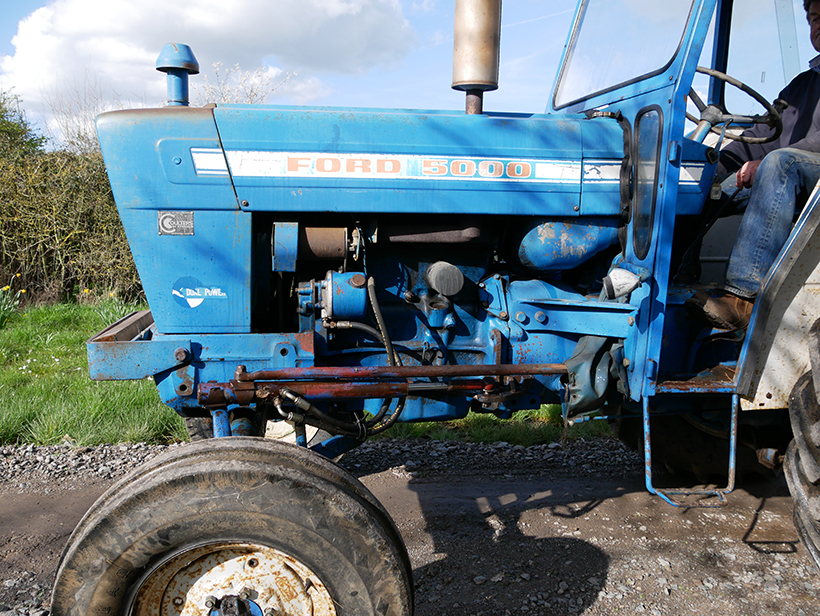
The aftermarket steering set up can be clearly seen in this picture.
Some years ago, an Evesham based journalist fondly reminisced in an article about the perks of the job, one of them being the annual trip with Coulters to the Ford works at Dagenham with a dinner and show in London.
Historic finds
In fact, according to the Our Warwickshire website archaeology records, in 1979 when some excavation work was being carried out at Coulters Alcester site a medieval pit and several post holes were found during an archaeological excavation, also in addition it is recorded as the site of a settlement dating from the Roman period and the site of possible roman burials when two probable late roman burials were reported as found at Coulters Garage, Alcester, also during archaeological work.
In April 1978 another Commercial Motor report referred to The Transport Department issuing a new list of approved tachograph calibration centres, one addition to the list was Coulters Garage (Evesham) Ltd, Elm Road, Evesham.
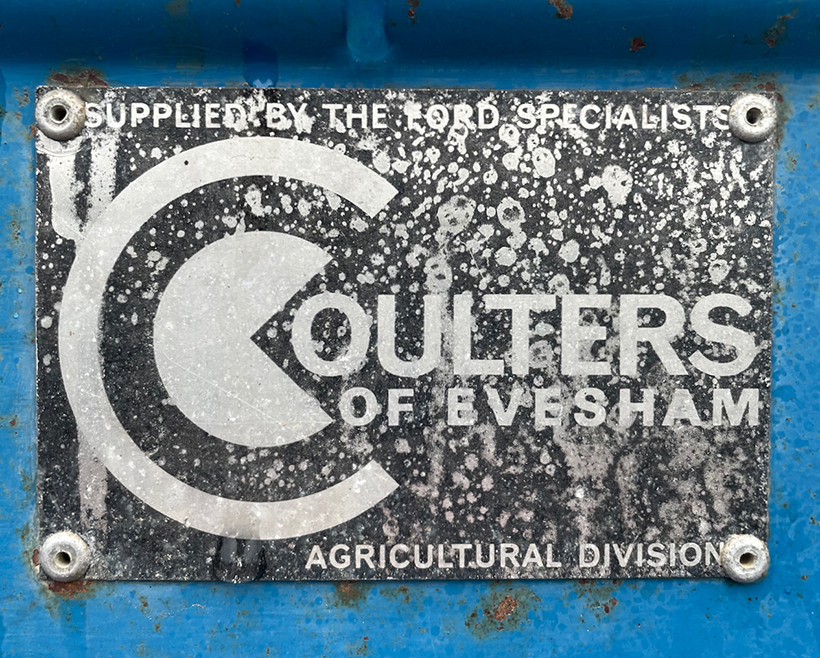
The original Coulters dealers’ badge on the Ford 5000.
In the early 90’s Coulters moved to a £1.2million development on The Link in Evesham, near to the new bypass, however around 1991 the companies Ford dealerships were taken over by Brooklyn Ford and the agricultural dealership seems to have gone to Murleys of Warwick, by 1994, which is when Coulters (Evesham) Ltd., ceased trading.
This feature comes from the latest issue of Ford & Fordson Tractors, and you can get a money-saving subscription to this magazine simply by clicking HERE
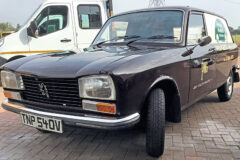
Previous Post
Sampling a very rare 1979 Peugeot 304 delivery van

Next Post
Exciting debuts spotted at Yeovil’s Abbey Hill Rally



